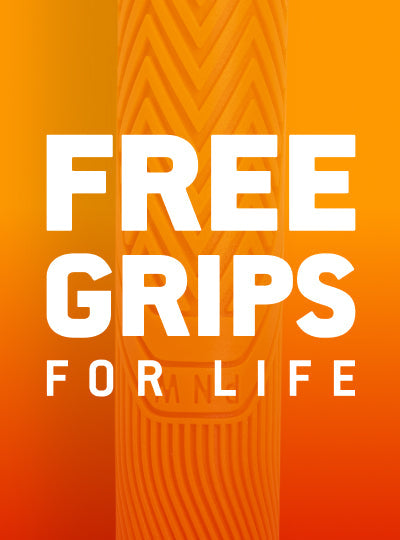Dropper posts, like any moving part on your bike, need occasional maintenance to keep them performing at their best. Grit and grime can build up on your dropper’s seal and can actually get pushed into the post as you ride. Fortunately, we use a sealed cartridge in our droppers, which makes servicing your post nice and easy. A simple cleaning and reapplication of grease works wonders in making your dropper feel like new. This maintenance can be performed as often as you like or on an as needed basis. We recommend servicing your dropper if the return rate has slowed or the post seems sticky when raising or lowering. Let’s get into it.
Looking to maintain an externally routed PNW Components dropper? Click here to be taken directly to those instructions. If you want a quick maintenance summary in graphic form for your internally dropper dropper, click here.
Maintaining an Internally Routed PNW Components Dropper
Necessary Tools/Materials
- High viscosity lubricant of choice (we recommend PNW Gold Grease)
- Rubbing alcohol
- Adjustable wrench
- 2mm allen wrench
- 3mm Allen wrench
- 5mm allen wrench
- A clean rag (microfiber preferred)
- High pressure shock pump (if dropper has tunable air cartridge)
Let’s Do Some Maintenance
Step 1:
Remove your dropper post from your bike. Disconnect the cable at the lever with a 3mm allen wrench. Loosen the saddle clamp with a 5mm allen or the appropriately sized tool. Pull the dropper post out of the seat tube while pushing on the cable housing at the front of the frame. Take the cable head out of the actuator.
Step 2:
Remove the saddle from the dropper post with a 5mm allen and, if applicable, relieve the dropper post of air pressure with a high pressure shock pump.
Step 3:
Unthread the mid cap and slide it up the dropper post’s stanchion towards the seat post head.
Step 4:
Use the adjustable wrench to unscrew the actuator at the bottom of the post. Hold the post with one hand and use the other hand to turn the wrench and actuator counterclockwise. Once loose, unthread the actuator entirely and pull it out of the lower tube by roughly one inch.
Step 5 (see GIF above):
Use a 2mm allen to remove the thru-bolts that hold the actuator to the lower cartridge shaft.
Step 6:
Now disconnected, remove the actuator and rubber washer from the cartridge shaft.
Step 7 (see GIF above):
Pull the post apart by pulling the lower tube down and away from the dropper post’s mid cap. If your post has travel adjust, remove the travel adjust bushing.
Note:
If the actuator rod falls out of the dropper post, it can be replaced at any time before re-securing the nylon cord. Place the flat end of the actuator rod into the dropper post, leaving the rounded end exposed.
Step 8:
Apply a bit of rubbing alcohol to your rag and wipe the dropper post’s stanchion clean, as well as the brass keys and machined grooves inside the post.
Step 9:
Apply a thin layer of grease to the brass keys and machined grooves inside the post.
Note:
Check the retaining nut in the saddle head to see if it’s loose. If loose, rotate it clockwise to tighten it. If it spins freely, contact our Customer Service team at info@pnwcomponents.com for more help.
Step 10:
We’re now going to reassemble the post. If your post has travel adjust, replace the travel adjust bushing first. Align the brass keys with the machined grooves and slide the uppers and lowers of the dropper post together. An easy way to make sure the post is sliding back together properly is to make sure the saddle clamp head is pointed forward along with the PNW logo on the front of the post.
Step 11 (see GIF above):
Replace the rubber washer followed by the actuator onto the lower shaft of the cartridge.
Step 12:
Align the bolt holes in the threads of the actuator with the machined grooves on the bottom of the cartridge shaft. Slide the thru-bolts in and use a 2mm allen wrench to tighten them snugly.
Step 13:
Reinstall the actuator assembly by threading it into the lower post body and use the adjustable wrench to tighten it into place. Just tighten it until it’s snug, there’s no need to over torque the actuator.
Step 14:
Seat the bushing, or the travel adjust bushing if applicable, into the top of the lower post body, then slide the mid cap downwards and thread it back onto the lower post body until it’s hand tight.
Step 15:
If your dropper post has a tunable air cartridge, use a shock pump to fill the air cartridge to your preferred pressure while the dropper post is extended, making sure not to exceed 300psi.
Step 16:
Attach your saddle and reinstall your dropper post into your bike.
Need help with installation? View the appropriate install guide on our manuals page or contact our Customer Service team via email at info@pnwcomponents.com for more help.
Maintaining an Externally Routed PNW Components Dropper Post
Necessary Tools/Materials
- 2mm Allen Wrench
- 2.5mm Allen Wrench
- 3mm Allen Wrench
- Adjustable Wrench
- 5/16 Wrench
- Needle nose Pliers
- High viscosity lubricant of choice (we recommend PNW Gold Grease)
- Rubbing Alcohol
- A clean rag (microfiber preferred)
Let’s Do Some Maintenance
Step 1:
Remove your dropper post from your frame. Start by disconnecting the cable at the lever. Remove the dust cover at the mid cap where the cable enters the post. With the cable loose at the lever, pull the housing down slightly at the post so that slack develops in the cable and you can pop the cable end out of the cable carrier in the mid cap.
Step 2:
Remove the saddle from the dropper post with a 5mm allen and, if applicable, relieve the dropper post of air pressure with a high pressure shock pump.
Step 3:
Use the adjustable wrench to remove the lower cap of the post. Hold the dropper with one hand and turn the lower cap counterclockwise with the wrench in your other hand. Once it’s broken free, unthread and remove the lower cap entirely.
Step 4 (see GIF above):
Use the 5/16th wrench to loosen the locknut and pull the nylon cable through the hole in the bolt.
Step 5:
To remove the mid cap, look for a 2.5mm allen bolt either on the backside of the mid cap or under the cable carrier where the cable end was installed. Use a 2.5mm allen to remove the set screw and set it aside for safe keeping.
Step 6:
With the set screw removed, slide the entire mid-cap assembly up the stanchion towards the head of the post. Next, slide the lower post body towards the head of the dropper to reveal the actuator and lower cartridge shaft.
Step 7:
Use a 2mm allen to remove the lower assembly thru-bolt and set it aside.
Step 8:
Remove the lower assembly and bottom out bumpers and set them aside.
Step 9:
Pull the upper and lower portion of the dropper post apart.
Note (see GIF above):
If the actuator rod falls out of the dropper post, it can be replaced at any time before re-securing the nylon cord. Place the flat end of the actuator rod into the dropper post, leaving the rounded end exposed.
Step 10:
Remove the upper roller pin and set it aside for safe keeping. Then apply some rubbing alcohol to your rag and clean the dropper’s stanchion, brass keys, machined grooves, and the inside of the lower tubing.
Step 11:
Apply a thin layer of grease to the brass keys and the machined grooves on the inside of the lower tubing.
Step 12 (see GIF above):
Run the nylon cord vertically along the dropper posts body, between the two brass keys, and wrap the nylon cord around the lower shaft to help guide it through the post body. Make sure the nylon cord runs through the grooves of both plastic spacers.
Step 13:
Now we’re going to start reassembling the post, starting by putting the upper portion of the dropper back into the lower tube. To align the lower assembly with the upper assembly, make sure the logo is pointing in the same direction as the saddle head. Slide the post together all the way to the saddle head, this should be an easy motion.Be careful! Nylon cords are easily damaged so if you feel the post jamming when sliding it together, make sure to stop and realign the nylon cord. Do not force this step.
Step 14:
Replace the upper roller pin at the mid cap, making sure it is firmly seated.
Step 15:
Align the threaded hole in the mid cap with the machined indent in the dropper post and reinstall the dust cap screw with the 2.5mm allen wrench. This screw was removed in step 5. After securing the mid cap, verify that the roller pin is still in place by looking for a shiny object tucked behind the cable carrier.
Step 16:
Grab the nylon cable and unwrap it from the cartridge shaft.
Step 17:
Reinstall the bottom out bumper on the cartridge shaft, followed by the lower post assembly.
Step 18:
With the 2mm allen wrench, reinstall the thru-bolt (removed in step 7), making sure it lines up with the machined groove in the lower assembly.
Step 19:
Align the metal bar on the lower assembly with the mid cap so that the nylon cable travels straight from the dust cap and through the post to the lower assembly. Do not put the nylon cord behind this metal bar as the metal bar acts as a second roller pin. The nylon cord should not be wrapped around anything at this point.
Step 20 (see GIF above):
Slide the lower assembly into the post body until it is flush with the bottom of the post body. Hold the nylon cable in your hand while doing so and be sure there is no slack.
Step 21:
Thread the nylon cable through the hole in the actuator rod bolt and pull it taut.
Step 22:
Use pliers to hold the cable taut while you tighten the lock nut with the 5/16th wrench to hold the cable in place.
Note:
If your cartridge is overextended it will push the lower assembly away from the lower tube and can cause your dropper post to sag. To counteract this, use your index finger to push and hold the lower assembly arm into the actuator rod while simultaneously pushing the lower assembly towards the post with your thumbs. Release the lower assembly arm while still applying pressure with your thumbs. Once the lower assembly is no longer pushing on the actuator rod you can stop applying pressure with your thumbs.
Step 23:
Wrap the loose end of the nylon cable around the actuator arm bolt and thread the lower cap back onto the dropper post. If the lower assembly is properly seated in the lower tube, you should be able to get the lower cap on almost all the way by hand.
Step 24 (see Gif above):
Use an allen wrench or screwdriver to push the cable carrier down and test whether the nylon cord is properly taut. If taut, the cable carrier will return to its original position when you stop pushing on it.
Step 25:
If the nylon cord is taut, you’re good to go. Finish tightening the lower cap with your adjustable wrench.
Step 26:
If applicable, use a shock pump to fill the dropper post’s air cartridge to your preferred psi while the dropper post is extended. Do not exceed 300psi.
Step 27:
Attach your saddle and reinstall the dropper post in your bike.
As always, if you have any questions or need help with re-installation, feel free to contact our Customer Care team at info@pnwcomponents.com and they’ll get you back on the bike in no time.







